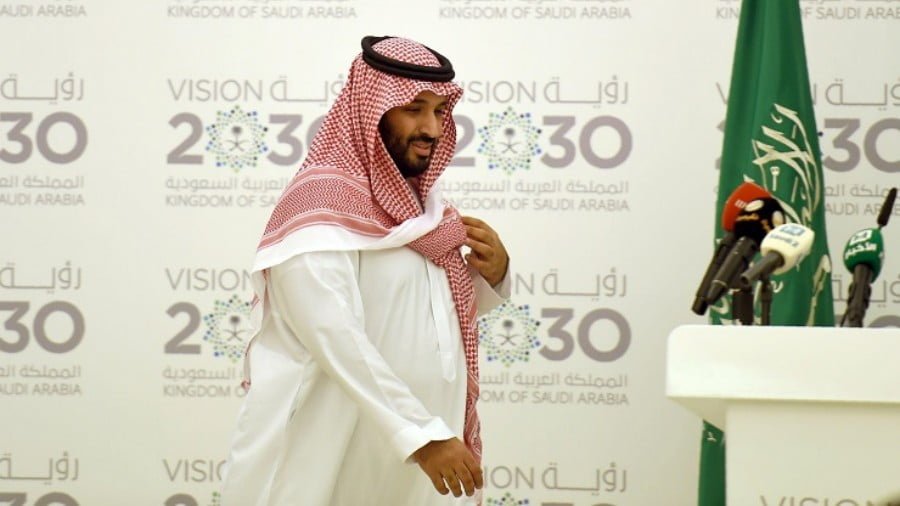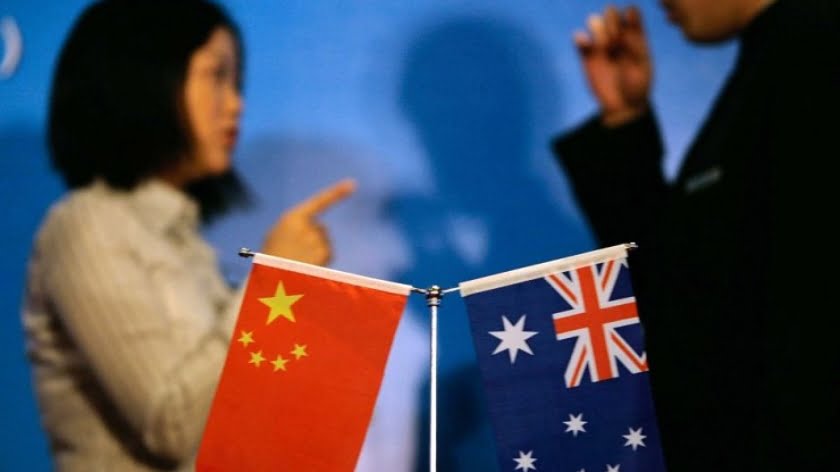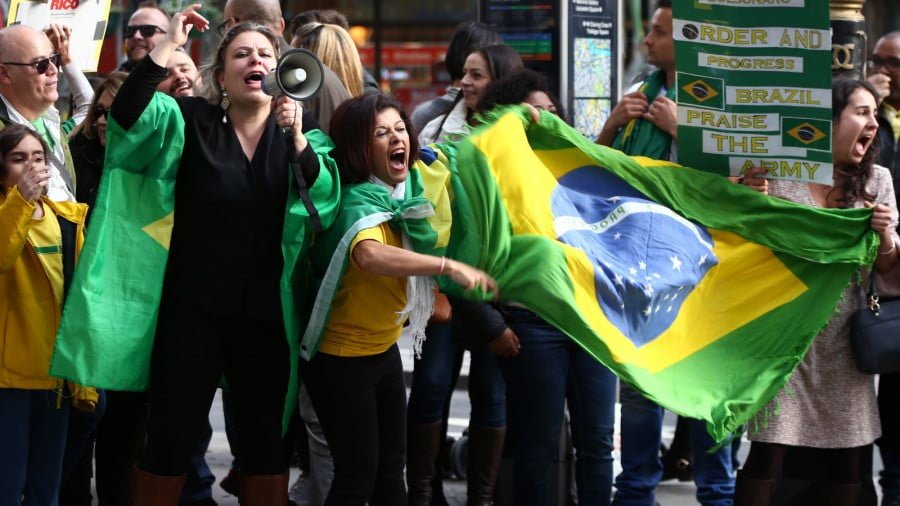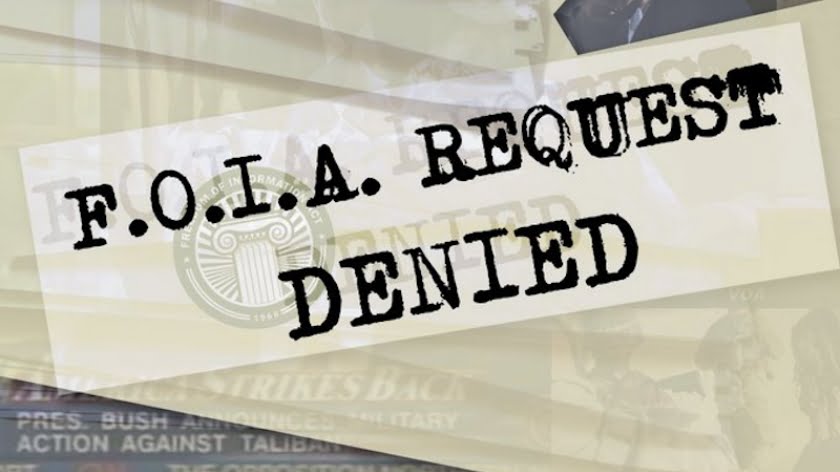Twilight in the Desert for Saudi Arabia and Crown Prince Mohammed Bin Salman?
It appears as if Saudi de facto ruler, Crown Prince Mohammed bin Salman, is on a mission to destroy the world oil giant by one after the other ill-conceived economic decisions. Now, as MbS orders yet new desperation cuts in Saudi oil prices, his economy is imploding from all sides—from the stupid Vision 2030 plan to even the traditional oil sector, the source for 87% of the Kingdom budget. The economic decline of Saudi Arabia will have huge geopolitical consequences beyond the Middle East.
As if it had learned nothing from its 2014 oil price war, then targeting the growing USA oil shale industry, Saudi Prince MbS ordered a new oil price war in March. That was after Russia, not an official OPEC member, declined to accept an added 300,000 barrel a day cut in output. The Russian argument was that doing so in a very uncertain world oil market would be foolish and counter-productive. The Russians were right. Saudis flooded world markets with an added 3 million barrels a day by early April. That was just the time when the global panic around the COVID-19 coronavirus spread led to a de facto shutdown of world airlines, auto and truck and ship fuel demand. MbS forgot to take that into account, and oil prices plunged. With it, the Saudi oil revenues to the state budget fell too.
Backfire
Within two weeks following the March Saudi oil war, this against both Russia and USA, world oil prices had plunged from near $60 a barrel to below $30. A catastrophe to put it mildly. Saudi Arabia needs oil at $90 a barrel to balance its state budget according to Fitch Ratings. By April as the coronavirus lockdowns were in full force around the world, Saudi oil export revenue was down a whopping 65% from April 2019. To put this into perspective in 2012 Saudi oil export earnings were some $350 billion. For 2020 estimated earnings may not reach $150 billion.
By early April global oil demand had plunged by an unheard-of 30% as the coronavirus lockdowns took their toll on the world economy. Only because of an unprecedented temporary OPEC cut then in oil production of 10 million barrels daily, led by Saudi, and this time joined by Russia, did world prices slowly rise from lows nearly $20 to around $40 a barrel, still a far cry from recovery. However prices are again going lower in mid-September as the world economy, including China and the USA, are far from recovered in oil demand.
Vision 2030?
This situation is a disaster for the mid-term project of MbS to leapfrog Saudi Arabia from oil dependency into the 4th Industrial Revolution. MbS took a report prepared for him by the controversial McKinsey consultants and called it Vision 2030.
To call the Saudi Vision 2030 an unrealistic pipe dream is putting it mildly. The blueprint, unveiled by MbS in late 2017, calls for making an advanced high-tech nation out of the desert Kingdom in little more than a decade by 2030.
The overall Vision 2030 plan is little more than a grab-bag of neoliberal proposals that will do little in the current environment to bring the promised new economy. In reality it will likely destroy what oil-based economic stability there is and greatly aggravate income disparities within Saudi Arabia where an estimated 20% live in poverty despite decades of oil wealth.
Explicit goals as of 2016 included three main pillars to create a “vibrant society, a thriving economy, and an ambitious nation,” whatever that means. Out of the 33 headings in the Vision, 14 deal with the economy, 11 with social issues, and eight with administration. With a population 70% officially overweight, MbS’ “vision” includes a goal of “doubling the number of Saudis exercising each week.” Other goals include raising personal savings, and having three cities among the top 100 ranked globally. Neom is not one.
Then the plan states lofty goals such as to increase non-oil GDP from 16 percent to 50 percent of GDP; reduce unemployment from 12 percent to 7 percent; attract $1 trillion in foreign investment. Then incredibly, the vision aims to attract 1.2 million (non-religious) tourists, and 30 million pilgrims a year and to “raise the Public Investment Fund’s assets to $2 trillion.” In 2018 Saudi attracted a mere 200,000 tourists aside from religious pilgrimages. Last year, some 2.6 million pilgrims went on Hajj, with religious tourism generating $12 billion. This year due to coronavirus all pilgrimages were cancelled.
The Saudi state PIF (Public Investment Fund) currently has some $320 billion. Goal is $2 trillion. Simply said, the Vision 2030 that should lift Saudi Arabia out of the petroleum era into the high-tech era with 5G, AI, gene-editing and such, has planned to open up the country, one of the most religiously conservative in the world, by privatizing chunks of the valuable state sector, cutting government oil and other subsidies (de facto a tax on the population who can least afford it) , and somehow attracting foreign investors. That was in 2018. The website officially has not been updated since.
Neom
The heart of the “vision” of MbS is creation of an entirely new city, Neom, which means “new future” in Arabic, about the size of Belgium. The official website describes the plan, “Neom will include towns and cities, ports and enterprise zones, research centers, sports and entertainment venues, and tourist destinations. It will be the home and workplace for more than a million citizens from around the world.” As a euphoric MbS told Bloomberg in a 2017 interview: “We want the main robot and the first robot in Neom to be Neom, robot number one. Everything will have a link with artificial intelligence, with the Internet of Things – everything.”
The planned location for Neom is on a barren patch of desert on the Red Sea near to southern Israel, Egypt and Jordan. The closest Saudi town is Tabuk. As the official description notes, the planned one million residents will not likely be native Saudi engineers and IT rocket scientists. They must import the high-tech talent.
The estimated $500 billion futuristic Neom is the pet project of MbS within the Vision 2030. It is to be financed by the Saudi PIF chaired by the omnipresent Crown Prince Mohammad bin Salman Al Saud. The PIF is to finance the Saudi “great leap forward.” It even included a Saudi-financed scheme to incorporate Egypt’s town of Sharm el-Sheikj as part of the Neom luxury tourist and economic zone.
How? Here it gets sticky. In 2016 Saudi foreign reserves were at $700 billion. This April, as oil prices collapsed, they stood at $448 billion. To meet rising state budget deficits the government has tripled VAT consumer taxes and doubled the price of gasoline, hardly winning public support. VAT went from 5% in 2018 to 15% this year.
The Public Investment Fund headed by MbS has fared none too well either.
The much-touted source that was expected to raise another $100 billion for the PIF was the privatization of the huge ARAMCO state oil company. In the current oil environment, it flopped. Instead of the initial five percent to be floated, and raise over $100 billion, the IPO was scaled down, with 1.5 percent sold for $26.5 billion, most internally, as foreign investors were not interested in the prospect. Now with their latest oil war, foreign confidence in ARAMCO as an investment is gone. “They’ve lost everyone’s confidence, including those that invested in Aramco, as they started a price war and cheated them all [of expected profits],” said Hugh Miles, editor of Arab Digest, in Cairo. Future sales of Aramco stock were intended to transform PIF into a $3 trillion fund. Not likely at present.
Another hope of MbS to pump up the assets of his PIF fund was to sink billions into the Japan SoftBank. That has also turned out badly. In May, SoftBank announced that during the fiscal year 2019-2020, the Vision Fund, in which Saudi Arabia’s PIF invested $45 billion, incurred a loss calculated at $17.7 billion. According to reports Saudi Arabia’s PIF has also cancelled plans to join with SoftBank in a $200 billion solar farm.
More recently the Saudi central bank, SAMA, loaned another $40 billion to the PIF to take advantage of what it hopes are bargain buys amid the COVID-19 lockdowns. They are betting on a future recovery of the global economy, including of the troubled Boeing, that is looking ever more dubious.
With the hopes for transforming the Saudi economy tied to the state oil giant ARAMCO prospects amid corona lockdowns and declining oil prices are grim. To make matters worse ARAMCO must pay a dividend of $75 billion as it promised when it listed 5 percent of its stock in December 2019. The company has to keep up these annual payments for the next five years.
At this point not only is Neom dead in the water, but also with it the entire Vision 2030 is a shambles. Saudi Arabia is struggling as never since 1945.
Geopolitical implications
Now that her allied neighbors, the UAE and Bahrain, have formally agreed to recognize Israel, MbS is under significant pressure to join the US-brokered initiative. All indications are that world oil demand, especially in the industrial countries of the EU and North America will decline as pressure for a green agenda politically grows. That has already created a serious global oil glut that Saudi is able to do little to change.
The recent 25-year Iran-China strategic partnership which apparently includes a significant military component, increases the pressure on MbS and the Saudis to devise a new geopolitical strategy beyond the series of proxy wars in Yemen and elsewhere that have been a significant failure for the Saudi side, with Iran-backed Houthi rebels able to regularly lob missiles at Riyadh and other Saudi targets. Several months ago the UAE intervened in Yemen to effectively partition the country along old Cold War lines, effectively ending the fruitless, destructive war against Saudi wishes, a clear humiliation of MbS.
Three years ago MbS declared an economic embargo against Qatar based on the latter’s close ties to the Muslim Brotherhood, now banned in Saudi Arabia, Egypt and other Gulf monarchies. As MbS is being pressed to openly join UAE and Bahrain in recognition of Israel, something already well underway behind the scenes, Washington this week urged Saudi Arabia to heal its rift with Qatar in order to increase pressure on Iran. Were that to happen, with Saudi Arabia today in a far weaker economic position, a new strategy of dealing with Iran might emerge. What would be the future of China’s Belt, Road Initiative that once envisioned extending to Turkey and Israel is unclear amid strong US counter-pressures. At this point, as the entire Middle East is in flux, the once mighty Saudi monarchy is looking like a giant with feet of clay as it sees the twilight of its power over world oil.







